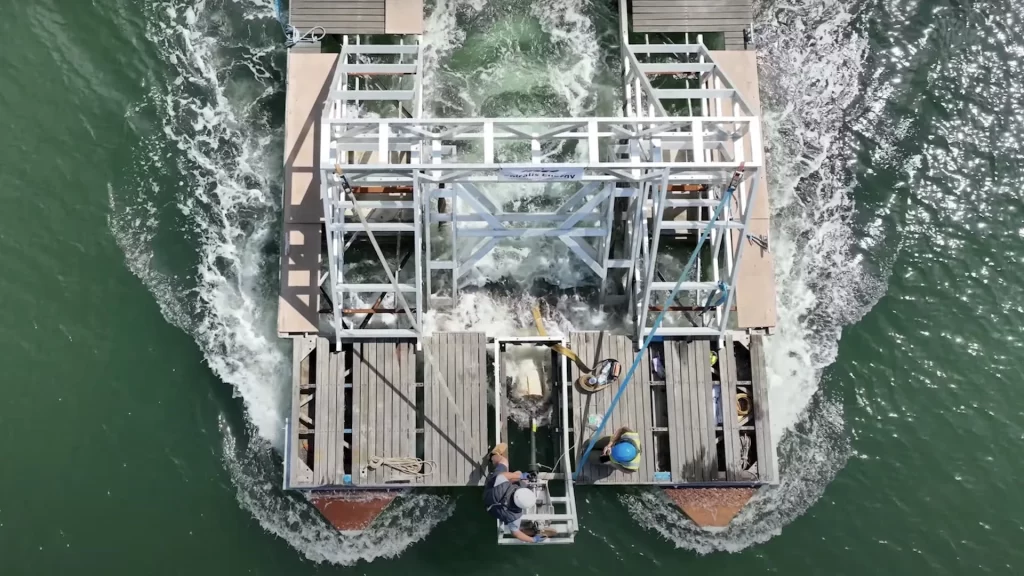
A London-based startup called Spiralis Energy has pitched the use of its “screw-like” tidal power generator to the States of Alderney, an island in the English Channel that flows between France and England, per an article by Interesting Engineering.
This comes in response to a call by the local government’s Energy Working Group, which invited proposals from companies working with tidal energy. It’s the process of harnessing power from the natural rise and fall of the tides caused by gravitational interaction between the Earth, sun, and moon.
Bill Abel, Lead for Energy Working Group, explained in a press release: “We have the potential to produce renewable energy from solar, wind, tidal, and wave resources and now, in addition to advancing solar- and wind-generation options, we are opening up the possibilities offered by our extensive tidal resources.”
The group estimates that there’s enough tidal potential in the area to generate up to 3 gigawatts. This will help free the island area from dependence on importing dirty fuels, reduce its carbon footprint, and expand its clean energy infrastructure.
A study found that tidal energy could provide about 11.5 gigawatts of energy to the U.K.’s grid, which is about 11% of electricity demand, per a report by Offshore Energy.
Spiralis has already tested a prototype and looks to install two of its 66-foot-long Axial Skelter screw generators off the Alderney coast. These will be initial forays, primarily to gauge the tidal flow in the region during colder winter months, as the report detailed.
Their tech is a riff on the Archimedes screw concept, although it works in reverse to generate power as water flows through the spiral and rotates the device. What makes their tech unique is the addition of aerofoil sections within the screws to help increase torque and, in turn, the energy output. So far, the company claims to have achieved 500 kilowatts when the tidal flows are moving at 3.5 meters per second.
What’s more, the Axial Skelter is made from recycled plastics and is entirely modular. The parts can be 3D-printed and shipped as a kit, where they can be assembled on-site. Broken pieces can even be melted down and reused in printing out replacements.
Other energy companies frequently use tidal turbines that have a propeller mechanism to harness energy from water flows. Scotland’s Orbital Marine Power has been able to reach a power output of 2 megawatts with this design at its Orkney installation off the country’s northern coast.
Another group is testing its propeller-styled design in the fast-moving currents off the coast of the Philippines, helping to wean the area off its dependence on diesel fuel.
While the Archimedean screw hydro turbine is relatively novel for the sector, the concept has been around for about 10 years. According to RenewablesFirst, power generation from the largest screw-styled hydro generators can reach 500 kilowatts, which matches up to Spiralis’ claims.
Although working in the tidal power industry has been challenging, the Spiralis team believe in their tech and industry knowledge. They continue to fund-raise toward the goal of building a full tidal-energy array by 2025.
























